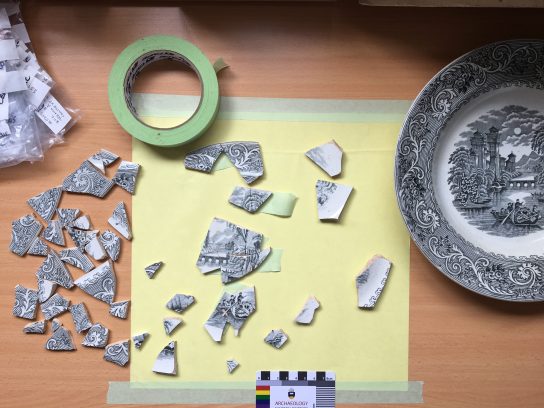Christmas is an excellent time for jigsaw puzzles. One of my longtime favourite novelists, Margaret Drabble, asserts that ‘jigsaws are a joy at Christmas, the ideal gift, the perfect employment’. Further, she says, they ‘give you an illusion of order and progress when all around is chaos’. What could be better? Part of the jigsaw’s appeal is the challenge, and that you can do them either on your own or with others. Apparently, they’re also good for the brain.
I was very fond of jigsaws as a child, they were often a birthday or Christmas present. My Aunty Pat in America once sent me a jigsaw of a field of sunflowers. It wasn’t terribly big, but its key feature was a table on the side of the box that listed times to completion (30 minutes, 20, 15, 10, 7) and assigned a label to those times (average, good, very good, excellent, genius). Naturally, nothing would do me until I reached genius level. This took me many days one summer, on the dining room table, completing the jigsaw over and over and over again.
Fast forward many years, and a harmless childhood diversion is reaping rewards. For I am cataloguing artefacts from the excavations at Baker’s Flat. And some of the ceramic shards could well be from one original artefact. In the picture below you can see how I’ve spent some of the Christmas break. There are 53 ceramic fragments, all potentially from the same Rhine pattern plate (intact example pictured on the right). Each fragment has been catalogued, labelled and photographed in the Flinders University Archaeology Lab. They are all from Trench A, but from two different contexts and four different squares. Armed with low residue masking tape (thanks to the tech officers in the lab), the challenge was on.
It didn’t take too long to fit the first pieces together – ranking myself at genius level here.
But the last ones took ages – possibly even below average level, if I’m being honest. Part of the challenge was that a plate is three dimensional, so various supports had to be contrived using kneadable erasers and Blu Tack. And my masking tape skills are clearly not expert. However, here is where I’ve ended up. Of the 53 fragments, 52 conjoin with at least one other piece. It is now as complete as it can be.



